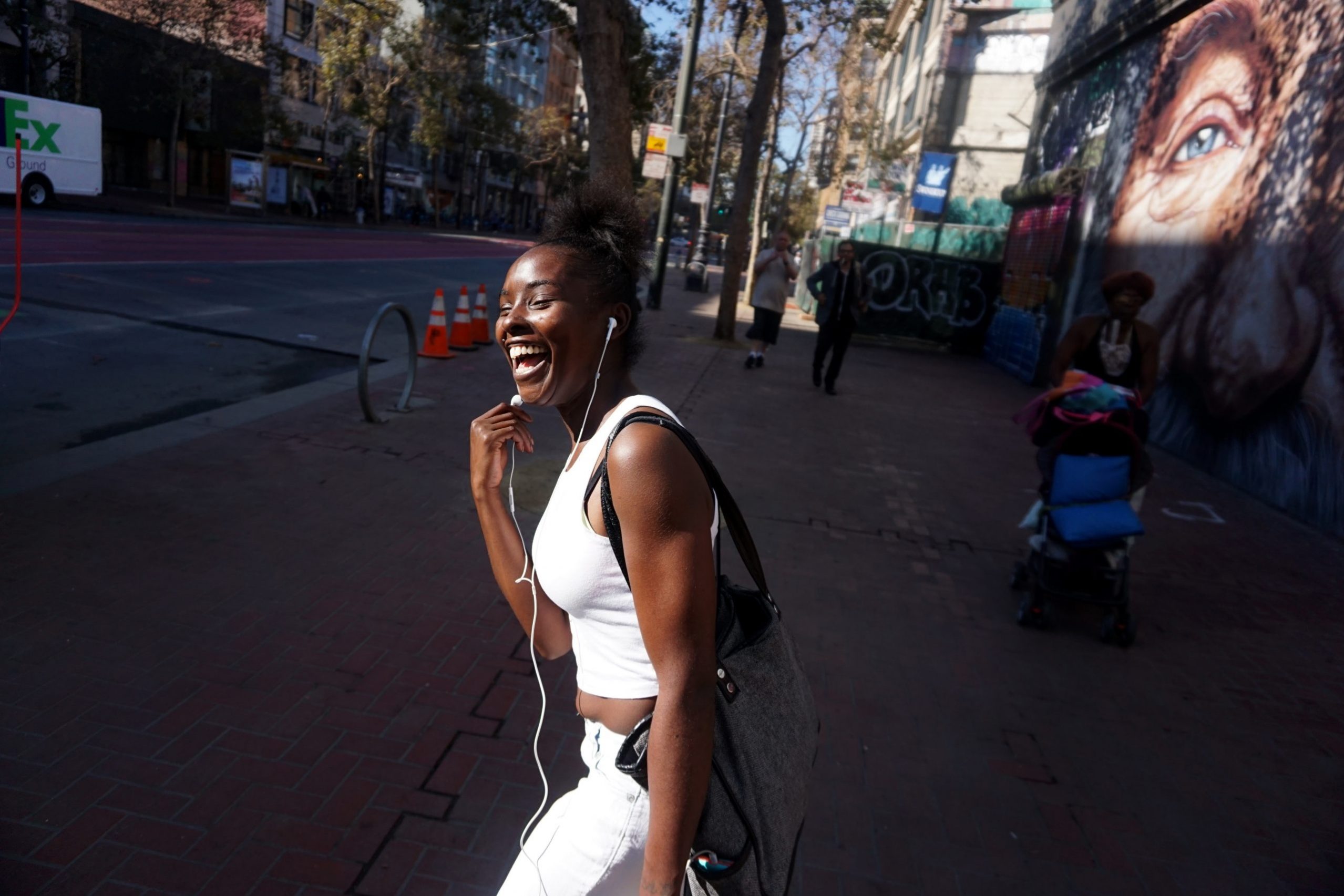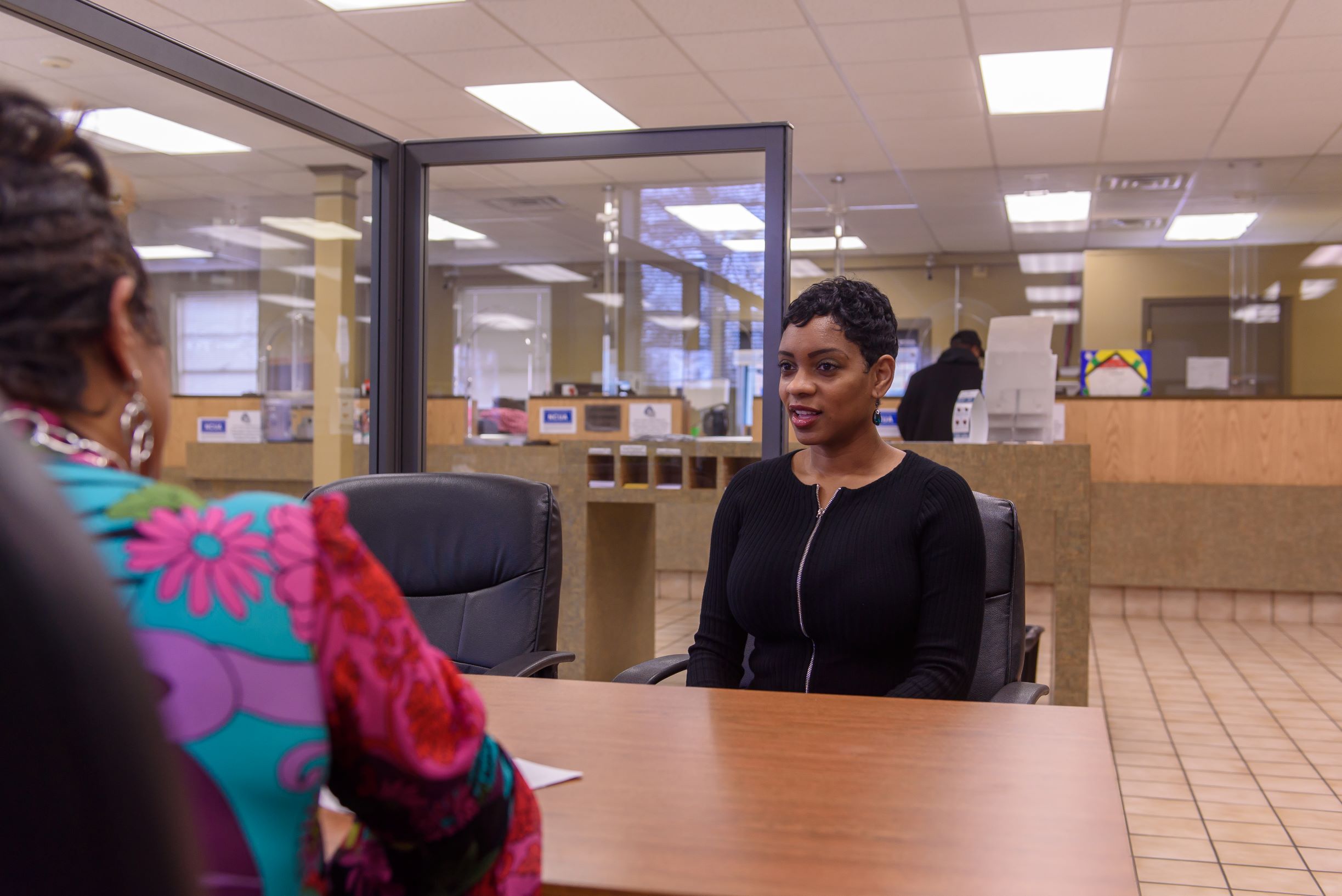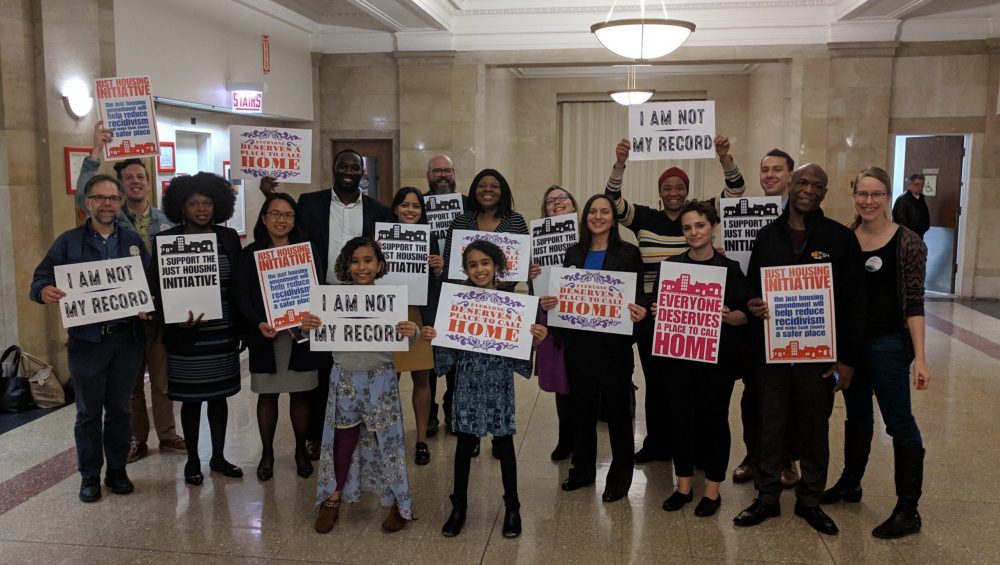
Lisa Daugaard
Lisa Daugaard, director of the Public Defenders Association, is a 2019 MacArthur fellow. Daugaard was key in developing the Law Enforcement Assisted Diversion (LEAD) program in King County, Washington. LEAD diverts people who have been stopped for low-level offenses resulting from behavioral issues or extreme poverty into harm reduction–style case management, rather than a punitive law-enforcement approach. According to the Public Defenders Association (PDA), LEAD participants are 58 percent less likely to be arrested after enrollment in the program, compared to a control group that went through “system as usual” criminal justice processing. PDA also has preliminary data that indicates, “LEAD improves the health and well-being of people struggling at the intersection of poverty and drug and mental health problems,” LEAD has been replicated in many cities around the country. Shelterforce spoke with Daugaard about how work on homelessness set her on her path, and how diversion programs can build political will to increase support for affordable housing and public health.
Miriam Axel-Lute: How did you get into working with diversion programs?
Lisa Daugaard: I was in New York for four years working on issues of homelessness and police violence. I was at the Coalition for the Homeless, and then at the Urban Justice Center, where I started a project focused on leadership development for homeless activists. We focused on police abuse of people who were living in public, [through] litigation and a lot of organizing with people who were homeless or formerly homeless. That was during the first Giuliani administration.
One of the great ironies of my work life is that back then, we commissioned a poster that is a picture of a giant riot cop with a big belly and a visor and a billy club, and it says “Rudy Giuliani’s idea of a social worker.” And then it goes on to make fun of the idea of using police to do outreach to homeless people. The tag line of the poster was “Out of the shelters, into the streets.”
The whole concept of using police to be a conduit to support structures was something that I and all of my colleagues were attacking back then. And now I use that poster sometimes in talks about the odd arc of my work because, in a way, that is actually the structure that that I have ended up promoting. I would say it’s radically different, though. The Giuliani administration used NYPD officers to do “aggressive outreach,” which was coercive in nature; didn’t involve any intentional training around behavioral health, substance use disorder, trauma recovery, or harm reduction; and was strongly directive in terms of where officers were telling individuals they needed to go [into the shelter system]. In contrast, law enforcement partners in LEAD programs attempt to use trauma–informed practices, emphasize that engagement with the social services component is voluntary, and typically engage in a sustained relationship with the individual referred, which requires establishing common interest and an atmosphere of support.
The early ’90s was a period of intense unemployment for people with a criminal history in particular. The people that I worked with were brilliant, emerging activists, [and] incredibly talented. I’m thinking of this one man in particular, who would keep a diary of all of his employment efforts. He documented more than 500. I vividly remember him reading out loud excerpts from his journal to the Black and Puerto Rican Caucus of the New York State Assembly. It was just not possible for somebody who was ready to work, able to work, super-motivated, to crack that ceiling of criminal history and lack of work history.
Then, under Giuliani, broken-windows, [and then–police chief] William Bratton, our members and leaders started disappearing. They would be not at a meeting, and [we would] find out later that they were in the Tombs [Editor’s Note: the Manhattan Detention Complex, a municipal jail] for turnstile jumping. It was wrecking any progress, any forward momentum that they were able to put together.
By the time I moved back to Seattle in the mid-’90s, I was extraordinarily focused on this sort of low-level, high-volume public order offense. When I became a public defender, the idea of a reform prosecutor was not even on the horizon. What prosecutors in America did was just push people [with] low-level offenses through misdemeanor courts, through pre-trial detention, through plea mills, securing enormous numbers of convictions regardless of whether people’s underlying circumstances would have supported a conviction.
The incredible accumulation of additional obstacles that people are facing as a result, that was what I was going to spend my career working on. Whatever the behavior or situation was that brought somebody to the attention of law enforcement, it tended to be the product of other systems failing people—structures of opportunity being closed, failures of health care, failures of schooling, failures of the foster care system. Already, people have been harmed, and then the justice system [is] compounding that. Oftentimes, those initial harms themselves were the product of the hyper-incarceration of parents and family members and caretakers.
That was the puzzle that I along with many, many other people began to grapple with in the mid-’90s. It was like the civil rights crisis of our generation.
And how did you get police and prosecutors to buy into the idea of diverting people away from conviction for these type of offenses?
I got to the table through adversarial confrontation. Sitting down and talking was the price of ending a long litigation fight.
My office had a small but tenacious project called the Racial Disparity Project that was, from the late ’90s on, tackling the extreme racial disparity in Seattle drug arrests. We were following a pattern that had been laid down by the Gloucester County Public Defender in New Jersey. In the early days of discussion of “driving while black,” they represented a bunch of folks who had weapons charges or drug charges [that] resulted from traffic stops. They set out to prove that traffic enforcement was racially disproportionate.
We modeled our work on that, but we directly attacked the drug charges themselves. In our case it was harder. Who actually commits law violations while driving is a matter of open observation. If you set it up right, you can do a study of who’s speeding and their race. Who actually commits drug crimes is much more difficult to prove because it’s covert, and while there is public health data on drug use, there was not at the time available data on drug sales, and enforcement was concentrated on delivery or sales.
We worked with a really innovative researcher at the University of Washington who later was part of taking down capital punishment in Washington State based on racial disparity. She ultimately concluded, from all available data sources, that white people were the largest racial group involved in drug sales as well as drug use, but were only microscopically present in the population getting arrested. Black folks were overwhelmingly the focus of arrests. So, we were litigating motions to dismiss groups of cases as a result.
The prosecutor [Dan Satterberg] who was newly in office is now one of the leading reform prosecutors in the country. But at the time, this was his first tentative step in the direction of doing things differently. He reached out—he was a Republican at the time—and said, “Look, we could keep fighting this out, but what would you say if we were to jointly approach the police department about whether they would like to take a different approach to drug enforcement?”
And we accepted that offer because, unbeknownst to him, I knew that we had finally drawn a bad judge. We started meeting seriously in 2008, and those meetings ended in an agreement to try this in 2010, and funding to launch in 2011.
The Seattle Police Department [was open to this] for their own reasons, not because they agreed about [our] racial discrimination [claims], but because they felt what they were doing was ineffective. Today, there is a lot of discussion about public order issues on our streets, and that exists, and we have mass homelessness in a way that we didn’t then. But what people forget is that visible crime, including drug dealing and drug use on the street, was much worse 10 years ago than it is now. There was a lot of arresting going on, and so there was a plausibility to the idea that maybe we needed to try something different. The status quo was not working.
So, we built a broad base of support for the concept that no matter what your ideological stripe, you were dissatisfied with the status quo, open to trying something new, and willing and open to the argument that you can’t arrest your way out of whatever the problem is that you think is going on.
We also had a strong mandate from civil rights organizations in Seattle who, while they did want to see an end to mass incarceration of people of color, and particularly Black folks due to drug activity, were not excited about the idea of just leaving people out there. They’re really interested in a positive agenda of care and support and high-quality response of the sort that middle-class white folks generally acquire for themselves through insurance or health-based interventions.
No one thinks that it makes sense for cops to respond to issues of public health, but because we live under a criminalization paradigm, they get called, and they get called in a racialized way. We start from that point, which is all a product of many broken systems and a lot of historical dynamics into which discrimination is embedded. Nonetheless, if it’s possible to radically shift outcomes, we should. And we have maintained that common ground ever since, which has been a really big eye-opener to me.
I always assumed that the people who were calling the cops wanted to see my clients go prison. I have since had the realization that what they want is a response. They are willing to agree that incarceration probably doesn’t make sense, but if that’s all they’re offered, they’re going to choose that. If they’re offered something that makes more sense and does less harm and re-establishes the connection between people and community, they’re even more excited about that.
I kind of felt stupid. It was like all this time we had this potential base of support that we failed to enlist. Ever since then, I’ve been really adamant that we should not assume that there isn’t widespread agreement that just needs to be mobilized in favor of a new response.
The same thing probably holds true for criminalization of homelessness?
Yes. At present here in Seattle, I would say criminalization of homelessness is a thing of the past. It certainly was present 20 years ago. When I was a public defender, probably [one-third] of my clients were being prosecuted for stuff like failure to pay a citation for sitting, drinking, or urinating in public or trespass in a park.
Now, those arrests are not made. Those cases are not filed. That said, people are still living in public, and the new sort of criminalization is just forcing people to endlessly move and confiscate their stuff. All the courts have been able to stop is a literal threat of taking somebody’s liberty away. That doesn’t translate into providing an actual channel to an alternative place to live.
If you take away criminalization [and] don’t offer a positive plan, you build a deep pool of resentment and backlash, which we’re cooking up nicely here, especially on the West Coast, where the 9th Circuit decision in Bell v. Boise that says you cannot prosecute people for the activities of homelessness unless they have an alternative in full effect. When cities stop using those tools of criminalization, they leave an increasingly frustrated public that is wondering what is the plan, and there’s a real void there.
You’ve gotten support, at least locally, for the LEAD program. But the next step, it would seem, would be to have sufficient treatment and sufficient housing to refer people to. What’s the potential for political will around getting that?
One of the advantages of marshalling all of these partners who are typically not on the same side to be part of the same team is that then you have cops, prosecutors, business leaders, neighborhood leaders, human services providers, and directly impacted people all singing from the same sheet of music—that we are not going to get very far unless we have a channel to permanent housing, particularly for people who face highest barriers, and that that group should be prioritized.
We are building different allies than have been available in the past for those policy initiatives. One of the pledges that we made to one another when we started LEAD was that we would see how far we could get by, No. 1, stop doing stupid things, stop intentionally breaking people. Step two [is] providing relationships [with] skilled case managers, who are often peers and have lived experience [and] can meet people where they’re at. And we give case managers money to spend.
However, we anticipated that you would slam into a low ceiling that was the product of system gaps and resource deficiencies. Those are not as visible when you’re working with a small pilot project, with 50 people or 100 people. In any system, really skilled case managers can often claw their way to an apartment for 10 people, right? But you really expose the system gaps when you’re working with a larger group. And with LEAD in Seattle, we’re big enough now that those gaps are really glaring. Lack of housing in particular is stalling many participants’ progress.
And so, we made this promise to one another that we would not only do the best we could with case management and protecting people from inappropriate use of the criminal legal system, but we would also call out the big policy shifts that are needed in order to give people what is needed to really thrive.
People have to overcome the consequences of multi-generational harm. This is going to be a long recovery arc. It’s our job to make sure that if folks are struggling, it’s not because the necessary pieces were not available when they were ready to use them.
Some of the moves to support affordable housing in Seattle have been fairly politically controversial, such as taxing certain large organizations. Do you feel like you’re at a point where you could get police support, prosecutor support, and business support for measures of that size?
We have just turned a corner with our local business groups. We’ve long had an alliance with businesses that kind of fell apart two years ago over the employer head tax. They spent 18 months trying to teach a lesson to policymakers about “don’t take us for granted, and don’t leave us out of the conversation,” which I think is a legitimate point, actually. But they didn’t succeed in toppling the city council, and I think that there’s a new pragmatism around really the only way forward is forward. In late capitalism, and with immense wealth inequality, we all have to line up together to have a prayer of having a cityscape that is tolerable for everyone and not a playground for the rich with casualties. I’m hopeful that we will get back to the business of putting all of our shoulders to the wheel and getting behind approaches that are good for everybody. In general, we do have a progressive business community that is front and center in efforts to increase revenue in order to fund human services. I don’t think there’s any reason to expect that we can’t have that again as long as the point isn’t to harm them, which kind of was the rhetoric [with] which some people brought the head tax forward.
What should our readers know about diversion programs?
Diversion can be done well, or it can be done badly. [It’s] an ongoing struggle to make sure that people aren’t handed off from one dehumanizing system to another. Typically, it is done badly, in a way that will be frustrating and disappointing for both the people who are sent into that new system and for the public that is being told that there’s an alternative. That alternative has to be real. It has to be scaled up, and it has to work. And we’re very far in any community from achieving that. That, to me, is where the work lies—in getting very serious about building alternatives that are universally accessible, that are always open. The jail is always open. One of the great attractions of the justice system is that it doesn’t say no to anyone.
We need to make sure that our alternatives are as easy to access and really don’t disappoint. I would urge people not to assume that the major work is to just get the justice system to let go of people. The main thing we need to do is make a compelling alternative so that it would be obviously idiotic to keep doing what’s been the past practice.
Thank you.






Comments